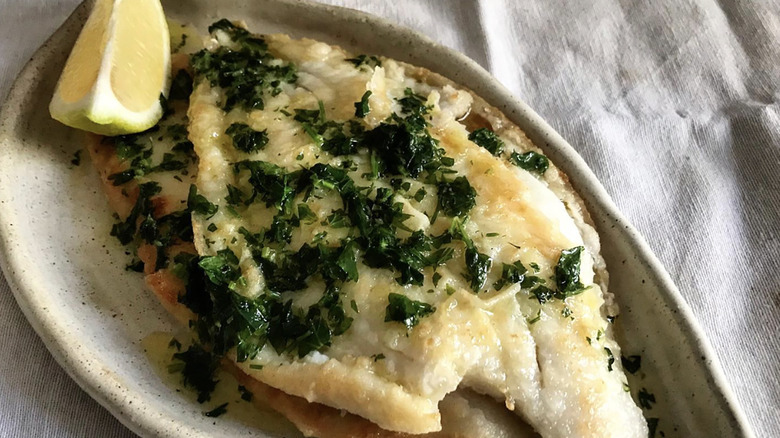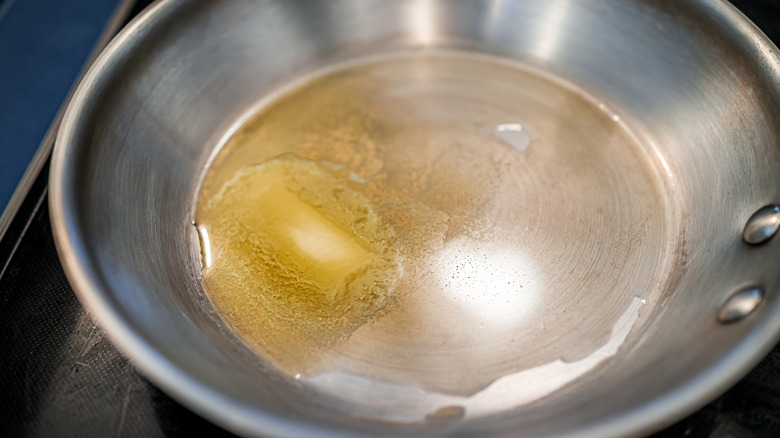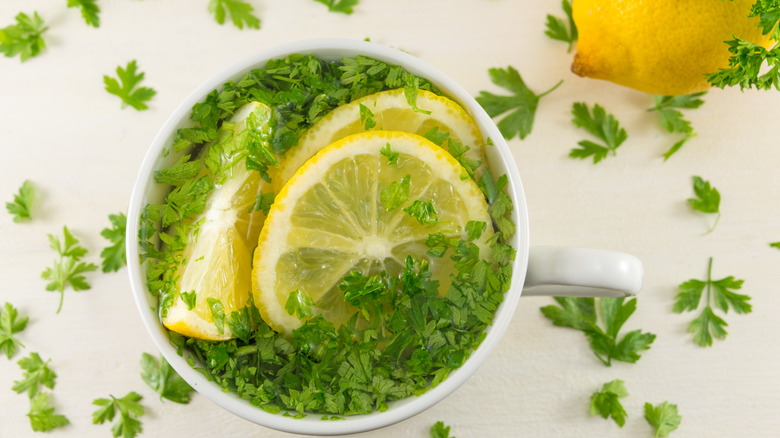A La Meunière Is A Simple French Method For Flavorful Fish
French cooking is revered worldwide, and for good reason. It's made its way into restaurants and home kitchens worldwide, elevating otherwise ordinary items to gourmet status, including soufflés, quiches, croissants, and cassoulets. We fondue and raclette our meats and cheeses, dish out coq-au-vin and boeuf bourguignon with a flourish, and transform a grilled ham and cheese into a croque-monsieur. Ratatouille and charcuterie roll right off the tongue these days. But is French cuisine really as difficult as we imagine?
There are hundreds of French dishes we can only dream of mastering. The French language alone can put food preparation on a pedestal, whether it's haute or nouvelle cuisine, originating in Paris, Bordeaux, Burgundy, or the Lore Valley. However, French chefs tie their aprons one string at a time, just like their global counterparts. Dishes with fancy names often plate out just the way our mothers made them, such as the fish preparation method known as "a la meunière."
In fact, the term a la meunière translates into English and is far from the upper crust, meaning "in a manner of a miller's wife." Though somewhat mysterious as a phrase dating to the mid-1800s, referring to an occupation long ago replaced by milling machines, it's actually just a simple French method of preparing fish.
Four ingredients and a piece of fish
Preparing fish a la meunière is often associated with sole fish, as dozens of chefs and cookbooks offer recipes for the French-named delicacy. Early celebrity chef Julia Childs made it her mission to introduce French cuisine to America after tasting sole meunière at the restaurant La Couronne in Normandy. In archival documentary footage from CNN, Childs credits that meal with changing her life, stating that "one taste of that food and I never looked back."
So here's what the fuss is all about. The name itself, referring to the miller's wife, indicates the flour component of a la meunière cooking, but equally important is the butter. In fact, those are the two primary ingredients, thus the simple nature of the dish. Typically, only two additions come in the finishing stage.
Using either white fish fillet such as sole or trout, the chef coats the piece in flour, then sautés it in butter until cooked. Using the highest heat possible without burning the butter creates a crispy texture and moist interior. A dash of lemon juice and a healthy sprinkling of chopped fresh parsley completes the délicieux morsel before making its way to your plate. It doesn't quite end there, however. The traditional way of serving fish meunière is with an accompanying butter sauce. It can be something as basic as melted butter with fresh herbs or a classic French brown butter sauce such as a nutty beurre noisette.
The method of the sauce
In modern-day kitchens, the brown butter sauce served with fish meunière, typically the beurre noisette, is often made separately from the fish. But culinary lore says it wasn't always that way. The original method was to use the butter directly from the sautéing process, along with the fish juices, to make a natural brown butter sauce. Some today still advocate this, simply adding lemon juice and parsley directly to the pan of leftover butter.
As a result, the term "meunière sauce" can stand on its own as a culinary component of the a la meunière cooking method. Professional and home-kitchen chefs alike have been known to toss in other bits of flavor such as capers, wine, or minced garlic. Customary accompaniments to sole or other fish meunière dishes include orzo rice or mashed potatoes with butter, cream, and fresh herbs, along with steamed asparagus, green beans, or Brussels sprouts.


